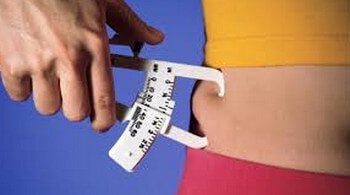Once considered to be a problem only in well-developed countries, obesity, at the moment, is attaining a dramatic increase even in developing and underdeveloped countries.
Obesity is defined as having abnormal or excessive fat buildup, causing tremendous risk to one’s health. It is usually characterized as having a body mass index (BMI) of more than 30, and is a common risk factor for chronic morbidities such as diabetes, cancer and cardiovascular diseases. One of its usual presentations is an increase in one’s belly fat, and eventually, tummy size. [1]
Belly fat is one of the more common sign of obesity.
Source: www.makeupandbeauty.com
The Problem
The increasing trend in the belly fat problem affects around 40% of the population in the United States. Belly Fat is considered to be more detrimental than other types of fat, since it is associated with an increase in the risk of developing serious health problems. In fact, statistics show that this increase in belly size can be a root to over 300,000 mortalities per year. [2, 3]
What Causes the Increase in Belly Size?
The increase in belly size is usually a characteristic of abdominal obesity. Also known as belly fat or central obesity, this is excessive abdominal fat around the abdomen and stomach. It is considered to be not just the fat or adipose located subcutaneously, but it is also underneath the skin. It is also made up by visceral fat, the fat lying inside the abdomen, surrounding the internal organs. [2, 4]
Risk Factors Increasing Visceral Fat
Adiposity of the viscera, or trunk, has the following contributing factors: [5, 6, 7, 8, 9, 10, 11, 12]
- Genetics
- Excessive consumption of fructose
- Maternal smoking
- Endocrine-disrupting chemicals
- Estrogenic compounds in the diet
- High carbohydrate diet
- Daily dietary protein intake
- Increased triglyceride and fatty acid levels
- Hypercortisolism and Cushing’s syndrome
- Low physical activity or sedentary lifestyle
- Urbanization
Sequelae of Increased Belly Size
An increase in belly, or visceral fat might lead to a number of health consequences: [2, 4, 13]
- These visceral adipose tissues are said to be more likely to produce toxic substances that can cause damage to the heart and blood vessels, thus is linked to cardiovascular diseases.
- They can also interfere with the body’s ability to utilize insulin, complicating diabetes.
- It can increase one’s risk of having cancer, metabolic syndrome, sleep apnea, and even Alzheimer’s Disease.
Measuring the Belly Size
In measuring the amount of fat in the belly, one can either use a tape measure or a body fat caliper. Tape measures are usually utilized to measure the abdominal girth or circumference. Body fat calipers, on the other hand, are used to quantify belly fat. It is placed around an area of body fat around the stomach, in which the fat is then pinched and measured in the region where the adipose meets the muscles of the abdomen. [14]

Tape measure can be used to quantify abdominal girth.
Source: www.aiwo.com

Body fat calipers can also quantify belly fat.
source: www.extremebodyfit.com
Ways to Reduce Belly Size
Because of the numerous morbidities documented stemming from increased belly fat and obesity, it is of extreme importance to diminish this problem. Below are a number of means by which this crisis can be resolved: [15, 16, 17, 18]
- Exercise
Regular exercise does not only slim and tone down the whole body, but it also diminishes the size of adipose cells in the abdomen. This is best achieved by high-intensity interval training (HIIT). Research has shown that this cardio workout is best performed twenty minutes three times per week, increasing to twenty five minutes of HIIT three to six times a week.

High intensity interval training can be done to reduce belly fat.
Source: www.healthmeup.com
- Eat correctly
A well balanced diet regimen may assist one in decreasing not only the superficial, or subcutaneous, fat but also in reducing the visceral fat. Because visceral adiposities enclose the abdominal organs, the risk of dyslipidemia, cardiovascular diseases and diabetes is concomitantly declined. A correct and well-nourished diet includes vegetables, fruits, and low grains, but should oust fat and sugar. Protein prevents loss of muscle mass, thus it is recommended to consume 0.45grams of protein per pound of body weight per day.
- One must know his or her ideal body weight, or body mass index (BMI).
A BMI range of 19 to 25 is the target for healthy adults. Target an ideal BMI, and aim for a steady and slow weight reduction, approximately around 1 kilogram per week.
- Always keep portion sizes in check.
One should make healthy choices of food, not allowing the calories to add up. Self control is the key.
- Avoid stress.
Studies have shown that belly fat is directly proportional to the amount of stress encountered by each individual. Stress seems to increase the circulating cortisol levels in the body. The cortisol subsequently reacts with the insulin, not only causing the human body to crave for more fat and sugar, but also produce more visceral adipose tissues in the abdomen. Thus, increasing belly size.
- Avoid alcohol containing beverages.
Alcohol tends to elevate stress. Thus, it also increases cortisol levels and lead to further production of abdominal fat.
- Quit nicotine.
Avoid smoking cigarettes. Nicotine, like alcohol, increases stress and insulin levels. Thus, consequently increasing belly fat.
- Weight Loss Medications.
The most common weight losing drugs approved by the Food and Drug Administration include Phentermine, Meridia and Xenical. Xenical binds to fat cells, prohibiting its absorption and allowing its elimination from the body. Meridia, on the other hand, increases levels of serotonin, dopamine, and norepinephrine in the brain, creating a sensation of early fullness and satiety. These drugs attain their best effects if combined with healthy lifestyles. The use of these drugs, however, should be advised and prescribed by a physician.
- Bariatric Surgery.
Also termed as gastric bypass, this is usually the last option for weight loss. In this method, the volume of the stomach is reduced, the patient feels satiety sooner than a normal person and hence, weight is lost. This also decreases the absorption of nutrients, leading to further reduction of weight and belly fat. Recent studies even showed that after bariatric procedures, both hormones peptide YY and glucagon-like peptide -1 are increased. These hormones signal the brain, decreasing one’s appetite and craving for food.
References:
- http://www.who.int/topics/obesity/en/
- http://www.postbulletin.com/life/health/belly-fat-linked-with-increased-risk-of-serious-health-problems/article_3a86e0d8-2639-53fe-afa4-dc459deaedfd.html
- http://www.whatcausesbellyfat.com/index.html
- http://en.wikipedia.org/wiki/Abdominal_obesity
- Stanhope, K, et al, Fructose Consumption: Recent Results and Their Potential Implications. Annals of the New York Academy of Science. 2010 March: 1190.
- Elliott, S, et al. Fructose, Weight Gain and the Insulin Resistance Syndrome. American Journal of Clinical Nutrition. 2002 November; 76 (5): 911-922.
- Heindel, J. The Obesogen Hypotheses of Obesity: Overview and Human Evidence. Endocrine Updates. 2011; 4 (30): 355-365.
- Ibrahim, I. Is The Effect of High Fat Diet on Lipid and Carbohydrate Metabolism Related to Inflammation? 4 (3): 203-209.
- Loenneke, J, et al. Quality Protein Intake is Inversely Related With Abdominal Fat. Nutrition and Metabolism. 2012 January; 9(1).
- http://www.health.harvard.edu/fhg/updates/abdominal -obesity-and-you-health.sthml
- Bujalska, I, et al. Does Central Obesity Reflect Cushing’s Disease of the Omentum? The Lancet; 349 (9060): 1210-1213.
- http://eurheartjsupp.oxfordjournals.org/content/8/suppl_B/B4.full
- Razay, G, et al. Obesity, Abdominal Obesity and Alzheimer’s Disease. Dementia and Cognitive Disorders. 2006 July.
- http://www.livestrong.com/article/88765-measure-belly-fat/
- http://www.canadianliving.com/health/fitness/8_ways_to_blast_belly_fat_exercise_and_diet_tips_for_a_slimmer_stomach.php
- http://www.webmd.com/diet/features/belly-fat-burden-reducing-your-waist-circumference?page=3
- http://www.prevention.com/fitness/strength-training/how-flatten-your-belly-and-reduce-stomach-fat-any-age?page=2
- http://www.mayoclinic.com/health/belly-fat/WO00128/NSECTIONGROUP=2

